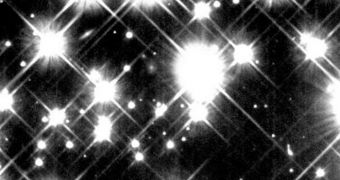White dwarfs are omnipresent in the Universe. They are generally seen as representing the final stage in an average star's evolution, and are thought to form when a Sun-sized stellar object can no longer sustain nuclear fusion. Astronomers have known for a long time that analyzing these objects may yield some interesting clues about the age of other structures existing in their vicinity. However, as the years passed, scientists noticed that many age readings collected in this manner were offset from those collected through other methods.
In the case of normal stars, the amount of brightness they exhibit is directly related to their age. The dimmer such a body is, the older it gets, and astronomers had this in mind when they first began looking at the brightness level of white dwarfs. Interestingly, researchers at one point noticed that members of this class of stars tended to be brighter than in the past, thus appearing younger. The mechanisms that caused this anomaly are not yet clearly understood, but scientists now know that they cannot rely on such estimates for establishing the age of formations such as star cluster, which may exist around white dwarfs.
“White dwarf stars radiate away their stored thermal energy, and so they fade and cool,” explains Universitat Politecnica de Catalunya in Spain astrophysicist Enrique Garcia-Berro. The expert was also the leader of the team that carried out the investigation. The researchers say that, in the case of a particular star cluster called NGC 6791, using the white dwarf method for assessing age led to considerable discrepancies from other methods. The technique found the structure's age to be about 6 billion years, whereas other methodologies yielded an age of 8 billion years.
The Spanish team developed a new computer model, which explains precisely why white dwarfs increase in brightness as they get older, thus skewing the results of investigations. The main culprit behind this type of behavior was found to be something called gravitational potential energy. Whenever it was released, the small star increased in brightness.
“Once you have neon-22 sedimentation and carbon-oxygen phase separation, both processes release potential gravitational energy. That slows down cooling and makes the white dwarf brighter,” Garcia-Berro says, quoted by Space. Details of the new model are published in the May 13 issue of the esteemed scientific journal Nature. “The important thing is that we now have a reliable and very simple chronometer which allows us to measure cosmic timescales,” the expert concludes.

 14 DAY TRIAL //
14 DAY TRIAL //